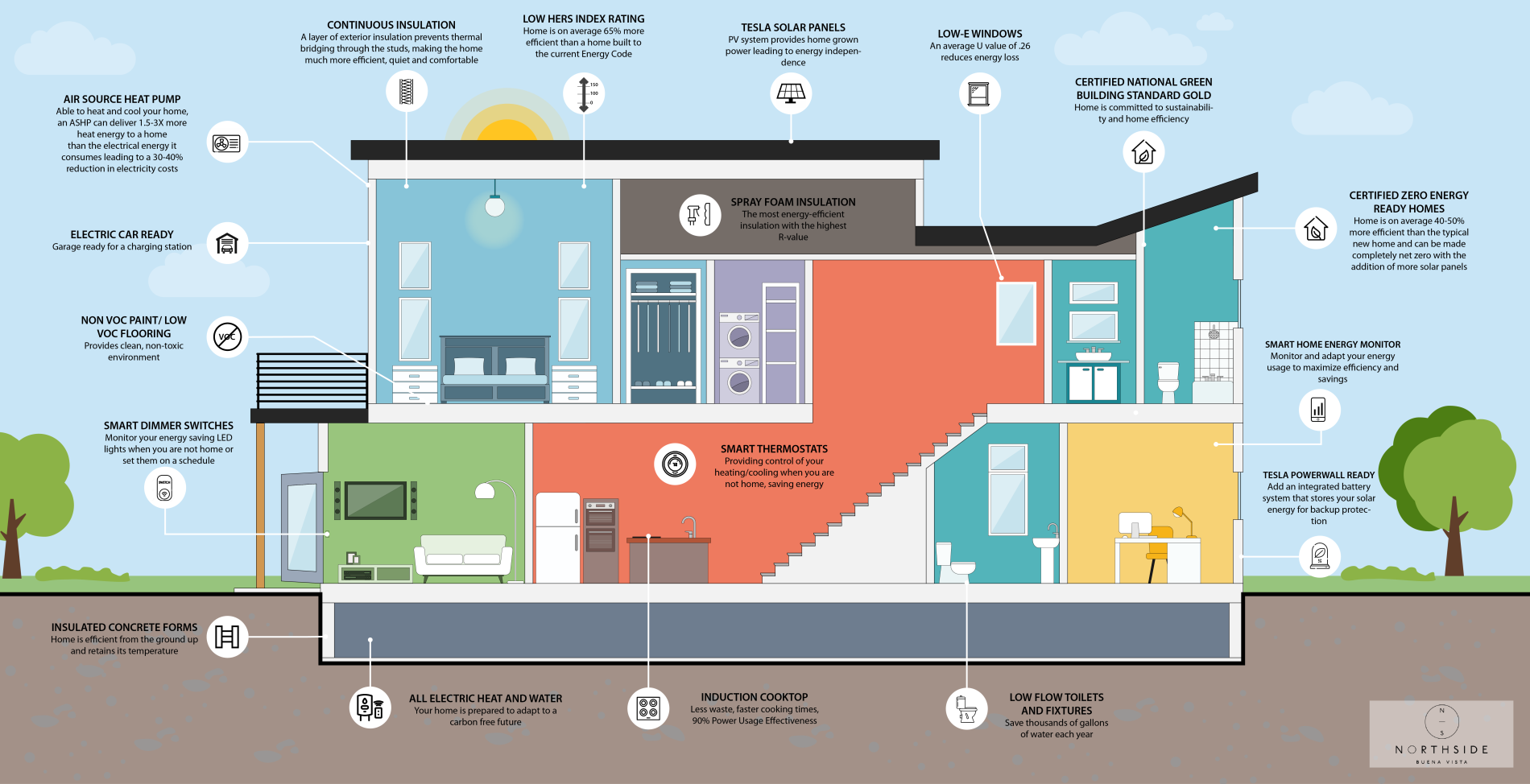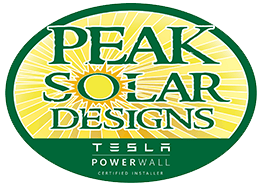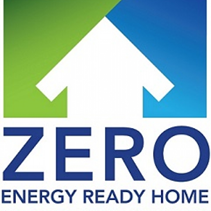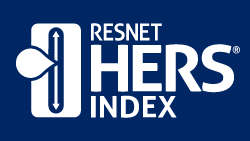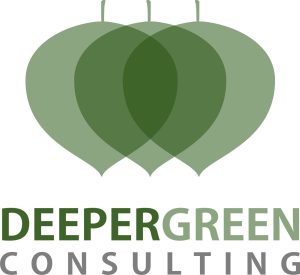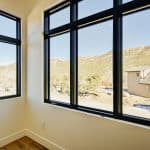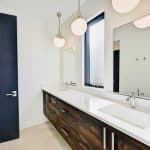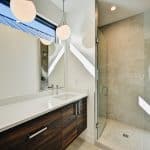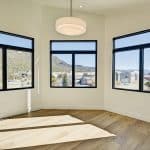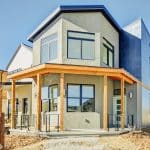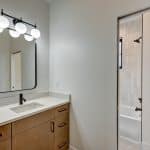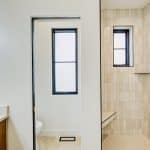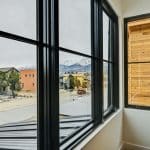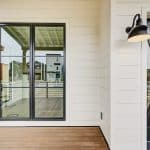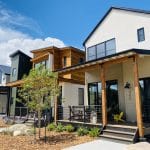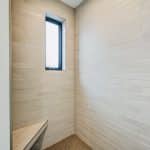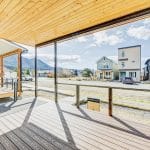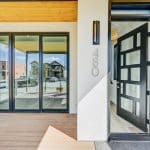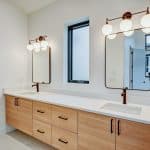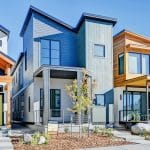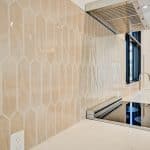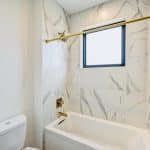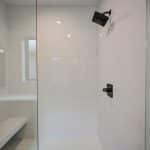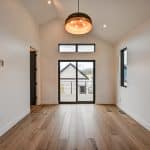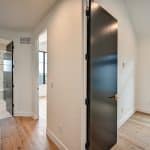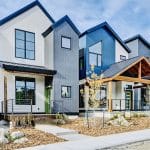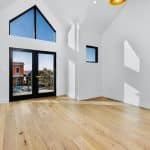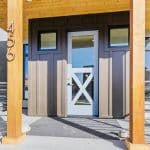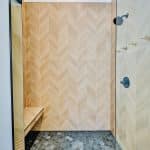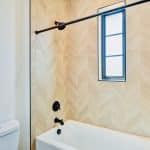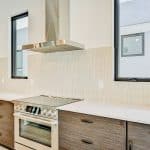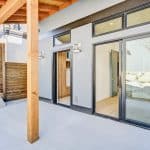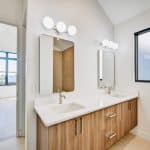Certifications
Zero Energy Ready Homes
Zero Energy Ready Homes are on average 40-50% more efficient than the typical new home and can be made completely net zero with the addition of more solar panels. ZERH includes EPA’s Watersense Program and Indoor Airplus, ensuring water safety and healthy indoor air quality. Not only is your home efficient but it is healthy too!
National Green Building Standard Gold
NGBS Gold certification not only considers how efficient the home is but shows a commitment to sustainability with respect to the resources used, lot development, and maintenance of the buildings. Gold NGBS certification is verified by third parties to hold the building to some of the highest efficiency standards. It is considered comparable to LEED, and in some respects even more stringent.
HERS Index Rating
The Home Energy Rating System (HERS) Index is the industry standard by which a home’s energy efficiency is measured. It is also the nationally recognized system for inspecting and calculating a home’s energy performance. The Northside homes are on average 65% more efficient than a home built to the current Energy Code.
Insulation
ICF Construction
Insulated Concrete Forms are used to make sure your home is efficient from the ground up. Pouring concrete into foam boarded insulated forms greatly improves the efficiency of any concrete walls and ensures the home retains its temperature despite the weather outside.
Continuous Insulation
A layer of exterior insulation prevents thermal bridging through the studs, making the home much more efficient, quiet, and comfortable.
Spray Foam Insulation
Spray foam is the most energy-efficient insulation to create an air barrier. Certain spray foams can expand up to 100 times its original size, so it fills all of the nooks and crannies. The main ingredients in certain spray foams are water-blown and organic chemical compounds derived from petroleum extracts. This makes the material environmentally safe. Spray foam is also Class One Fire Rated, which means it won’t serve as a catalyst if there is a fire. It also doesn’t retain water, so it won’t promote mold or mildew growth. Spray Foam helps provide lower heating and cooling bills, while enabling a more comfortable indoor environment.
Low-E Windows with an average U Value of .26
U-Value is used to define window thermal performance. In other words, it measures the rate of heat transfer or how much heat is lost or gained when it passes through the glass. It accounts for both the heat that enters and exits the glass. The lower the UFactor, the greater a window’s resistance to heat flow, and the better the insulating
value.
HVAC and Water
All Electric Heat and Water
With all-electric heating and hot water, your home is prepared to adapt to a carbon-free future. With Sangre de Cristo Electric Association offering carbon-free electricity options, your home could be completely Net-Zero just by adjusting your electricity plan.
Air Source Heat Pump
Heat pump technology has been around for a while but recent advancements have made them extremely efficient and better suited for our mountain climate. Using the
similar technology as A/C units, they can both heat and cool your home by adding or removing heat from the air. An air-source heat pump can deliver 1.5-3X more heat
energy to a home than the electrical energy it consumes leading to electricity costs reduced by 30-40%. Read here to learn how Japan, one the most energy‑efficient economies in the world, is reducing its carbon footprint in part by 90% of its population using heat pump air conditioners: https://www.mitsubishicomfort.com/articles/electric-heat-pumps-bring-eco-friendly-efficiency
Smart Thermostats
Smart thermostats allow you to have more control over your heating/cooling and can adapt to your schedule, making sure the home is comfortable when you are around and not wasting energy when you are not. It varies depending on what temperature you like to keep you home at but on average you can save 10-12% on your heating costs by using a smart thermostat.
Energy Conservation
Smart Lighting
Smart lights let you illuminate your whole home simultaneously. Being able to basically snap your fingers and go from on to off across every room at once saves a lot of cumulative switch flipping. Going to bed is equally easy. Every light can stay on while you’re snuggled up nice and toasty in bed. Fiddling with the app might seem like just as much work as flipping a physical switch, but there are other options. These lights can use voice activation with the full range of virtual assistants. You can set automatic schedules that can match your lights with sunrise and sunset, for example. Geofencing helps a bunch, too. Your lights can automatically turn off when you leave the house, and turn on when you get home. With minimal initial setup, your lights can operate on cruise control.
By being able to automate and remotely control which lights are on, you can ensure that you’re only using lights when and where they’re needed. This can further cut electrical usage that’s already quite low from being an LED. Ultimately, this saves money on your electrical bill and helps the environment by minimizing reliance on a grid. Smart lights can actually make your home more secure. You can remotely turn lights off and on, no matter how far away you are, but the real convenience is when you get a smart lighting system that has a dedicated away mode. These will routinely and randomly cycle your lights off and on, so any potential observers would assume there’s some sign of life inside.
Smart, Energy Star Appliances
Smart appliances can monitor the energy they’re using and reduce waste. Investing in smart appliances can mean monthly savings for years. Smart kitchen appliances provide useful information to homeowners. Ovens can tell you if you are at the right temperature or when it’s time to take something out. They can monitor how well things are cooked and automatically shift into warming mode until you’re ready to eat. Smart kitchen appliances can be monitored on a regular basis from your phone, so you’ll know everything is in working order. They can alert homeowners to issues in the kitchen when they’re away from the house. They can tell you when you’ve left the fridge door open or if something is wrong with the dishwasher. Smart appliances are making actual changes to how we eat, cook and live. It gives us more time to focus on being healthy, preserving the environment, and saving money.
Induction Cooktop
Induction cooking takes place on a flat glass surface equipped with heating coils that are powered by electromagnetic energy. Induction cooktops heat faster than electric and gas counterparts. They offer precise temperature control which allows for more controlled cooking. When you turn the burner off, heat transfer stops immediately, so there’s less of a chance of foods boiling over or overcooking. Induction cooktops offer a safer way to cook than electric or gas. They do not emit gas into the air and they turn off when you remove the cookware. Induction cooktops maintain a cool cooking surface. Since only the pan gets hots, a hot element will never be exposed, preventing fire hazards and the risk of burns. This also allows for quicker cleanup. Induction cooktops are more energy-efficient than electric or gas because heat isn’t lost in the transferring process. With gas and electric ranges, a lot of energy is lost to the air around the pots and pans. With induction, only the cookware heats, which translates to energy and cost savings.
Smart Home Energy Monitor
Energy monitors are a gateway to the inner energy workings of your home. They connect to your electricity meter to show how much energy your home is using and provide information about how you can make your home more energy-efficient. Energy monitors provide a mixture of control, scheduling, and user information saving both money and energy. They help you adapt your energy usage behavior based on the feedback received from the system. Energy monitors can recognize the energy usage of individual appliances and generate personalized recommendations for energy efficiency. They can also support utility demand-response (DR) programs and reduce usage during more costly peak demand hours.
Solar Energy/ PV System with Solar Panels
This Solar system has a 3.4KW solar array with potential to increase 50%. Solar energy is a versatile form of clean alternative energy which can be used in every environment. Solar energy helps you reduce or eliminate your electric bill, raises your home value, reduces your carbon footprint, protects against rising electricity costs, and earns money back on your investment. Solar can be sold back to the grid. Solar systems derive clean, pure energy from the sun. Installing solar panels on your home helps combat greenhouse gas emissions and reduces our collective dependence on fossil fuel. When fossil fuels are burned to produce electricity, they emit harmful gases that are the primary cause of air pollution and global climate change. Not only are fossil fuels bad for the environment, but they are also a finite resource. Renewable energy also improves public health. Coal and natural gas plants produce air and water pollution that is harmful to human health. Fossil fuel production requires significant water resources and causes water pollution whereas solar energy requires little or no water to operate. Solar power does not pollute water resources or put a strain on the world’s water supply. It also works during a drought or heat wave when other forms of electricity are at a risk. In addition, Solar energy creates jobs in clean energy as innovative and forward-thinking companies continue to embrace the changing landscape of energy production and move to renewables.

